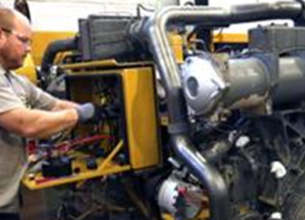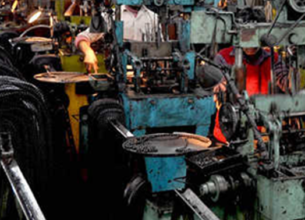Prelim Snippets 21-08-2019
M-SAND
Context:Tamil Nadu State Government has proposed to come up with a M-Sand policy
About M-Sand:
- Manufactured sand (M-Sand) is a substitute of river sand for concrete construction.
- Production: Manufactured sand is produced from hard granite stone by crushing.
- It is manufactured using technology like High Carbon steel hit rock and then ROCK ON ROCK process which is synonymous to that of natural process undergoing in river sand information.
- Features: The crushed sand is of cubical shape with grounded edges, washed and graded to as a construction material. The size of M-Sand is less than 4.75mm.
- Why Manufactured Sand is Used? Due to fast growing construction industry, the demand for sand has increased tremendously, causing deficiency of suitable river sand in most part of the word.
- Due to the depletion of good quality river sand for the use of construction, the use of manufactured sand has been increased. Another reason for use of M-Sand is its availability and transportation cost.
KONKAN-19
Context:The 14th Edition of Konkan series of annual bilateral exercises was recently held.
About Konkan Exercise:
- It is an annual bilateral exercise between Indian Navy and Royal Navy of Britain.
- It was recently heldoff the South Coast of UK.
- It aims to promote mutual understanding, provide exposure to operating procedures, communication measures and best practices.
GHARIALS
Context: More than 5,000 baby gharials (Gavialisgangeticus) were born in the latest hatching season (June-July, 2019) at the National Chambal Sanctuary on the tri-junction of Rajasthan, Madhya Pradesh and Uttar Pradesh.
About Gharial:
- Gharials, sometimes called gavials, are a type of Asian Crocodilian distinguished by their long. Thin snouts. Crocodilians are a group that includes crocodiles, alligators etc.,
- Once Found from Pakistan to Myanmar (Burma), the reptiles, range has shrunk to two countries:
1.India, along the Chambal, Girwa, and son Rivers;
2.Nepal, along the Narayani River.
| IUCN Red List | Critically Endangered |
| CITES | Appendix 1 |
| Wildlife Protection Act 1972 | Schedule 1 |
NEW EXOPLANET ‘B PICTORIS C’
Context:Astronomers at the Institute for Planetary sciences and Astrophysics, Grenoble (IPAG) have discovered a second giant planet—3,000 times more massive than Earth— in orbit around the star Beta Pictoris, located just over 63 light years away from Earth.
About B Pictoris c:
- The new exoplanet ‘B Pictoris c’ is nine times Jupiter’s mass and takes about 1,200 days to compete its orbit.
- Like its big sister B Pictoris B, discovered in 2009, it is a gassy giant.
- B Pictoris B spins at a breakneck speed of some 25 kilometres per second (90,000 kph).
- Located in the southern sky, Beta Pictoris can be seen with naked eye at latitudes between +26° and -90°, and is surrounded by a disk of stellar dust.
- It is relatively newborn—only 23 million years old.
- The Sun is more than 4.5 billion years old. Its name is Latin for painter, and is an abbreviation of the older name Equuleus Pictoris (the “painter’s easel”).
About Beta Pictoris Planetary System:
- Beta Pictoris (β Pictoris or β Pic) is the second brightest star in the constellation Pictor.
- It is located 63.4 light years from the Solar System, and is 1.75 times as massive and 8.7 times as luminous as the Sun.
- The Beta Pictoris system is very young, only 20 to 26 million years old, although it is already in the main sequence stage of its evolution.
- Beta Pictoris is the title member of the Beta Pictoris moving group, an association of young stars which share the same motion through space and have the same age.











